Suzuki Swift vs Renault Clio: Finding your perfect Fiesta replacement
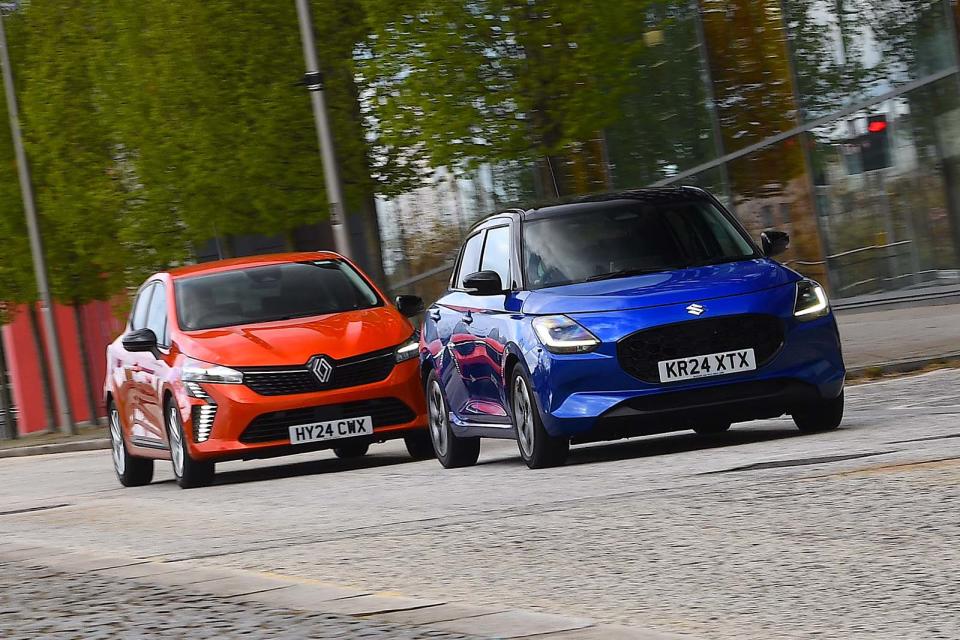
Affordability, practicality, handy compactness, versatility; these superminis have it all
The small car is dead, isn’t it?
The ever-increasing crossover onslaught has sunk a fair few nails into the supermini’s coffin because these high-riding alternatives offer greater street cred for the buyer and a healthier slice of profits for the manufacturer.
Certainly, the UK’s latest top 10 new car sales chart for 2024 would bear this out, filled as it is with SUV-flavoured models of all shapes and sizes.
Then there’s the race towards electrification. Battery power and bargain basement prices don’t currently mix, so the major players have concentrated on bigger models with larger financial margins. Superminis be damned.
But perhaps it was the news that one of the biggest-selling players in town was being put out to pasture that really made motor watchers fear the worst: if Ford couldn’t make a case for the Fiesta, then what hope was there for this previously popular genre? Certainly, Nissan and Kia agreed, quietly dropping the Micra and Rio respectively from their price lists.
Yet where some see despair others spot an opportunity.
After all, the supermini’s blend of affordability, practicality, handy compactness and Swiss Army knife versatility remains a strong draw for many, who understand that the best small cars have the breadth of ability to be much more than mere ‘town cars’.
Introducing the Suzuki Swift and Renault Clio
Quick links: Interior - Driving dynamics - Powertrains - Verdict - Specs
As a result, Suzuki believes its new Swift is likely to be even more popular than its predecessor. Bosses have calculated that there are currently around 250,000 drivers of now defunct models who will want to buy a similar type of car within the next few years (not everyone craves a crossover) and they intend the Swift to be there to pick up the extra sales.
It’s not quite an all-new model, though. Even in the good times, the profitability of small cars was slim, so in these straitened circumstances, even allegedly box-fresh models have to live with make-do-and-mend architecture. Still, the Swift’s existing Heartech platform gets redesigned bodywork, an overhauled interior, new electrified powertrains and the latest safety equipment.
Mind you, the Swift won’t have these customers all to itself. Mazda, Seat, Skoda, Toyota, Vauxhall and Volkswagen all have cars that fulfil the supermini brief to perfection. And then there’s Renault, whose Clio is our current class champion and is the car the Suzuki must beat.
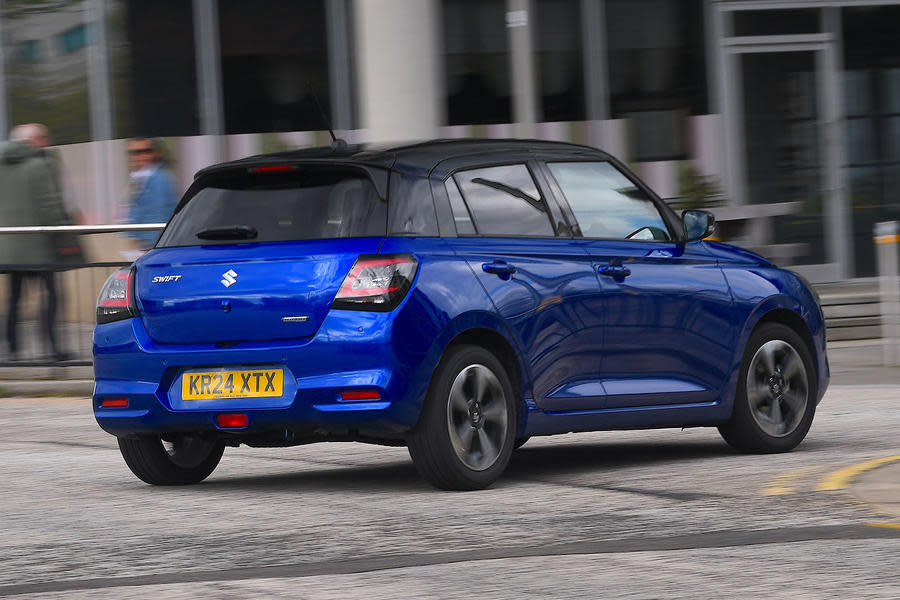
The Swift certainly has value for money on its side, with the entry-level Motion model priced at £18,699. Even the flagship Ultra, driven here, comes in at under £20,000, despite having a standard kit list that’s lengthier than those of models that cost noticeably more.
That said, the Clio is even more attractively priced and hardly lacking in creature comforts, especially if you forgo the full-hybrid powertrain option and plump for the distinctly old-school 89bhp 0.9-litre TCe petrol that has been dropped into our bottom-of-the-range £17,995 Evolution.
Despite its more modest price, the recently revised Clio’s handsome and well-proportioned lines deliver more kerb appeal, to our eyes, than its slightly gawky, awkwardly angled Japanese rival. Two-tone paint helps soften the Suzuki’s visual impact but pushes the price up by £850. Our Renault’s retina-burning Valencia Orange paint is £700 extra.
Suzuki Swift vs Renault Clio: Interior
It’s a similar story inside, where the Swift has to give best to its French adversary. Its new dash looks good and everything is solidly screwed together, but the scratchy plastics feel cheap to the touch and the fabrics aren’t as welcoming.
The Suzuki also suffers from a driving position that’s undermined by offset pedals, resulting in a few aches and pains for this (admittedly ageing) road tester after a couple of hours behind the wheel.
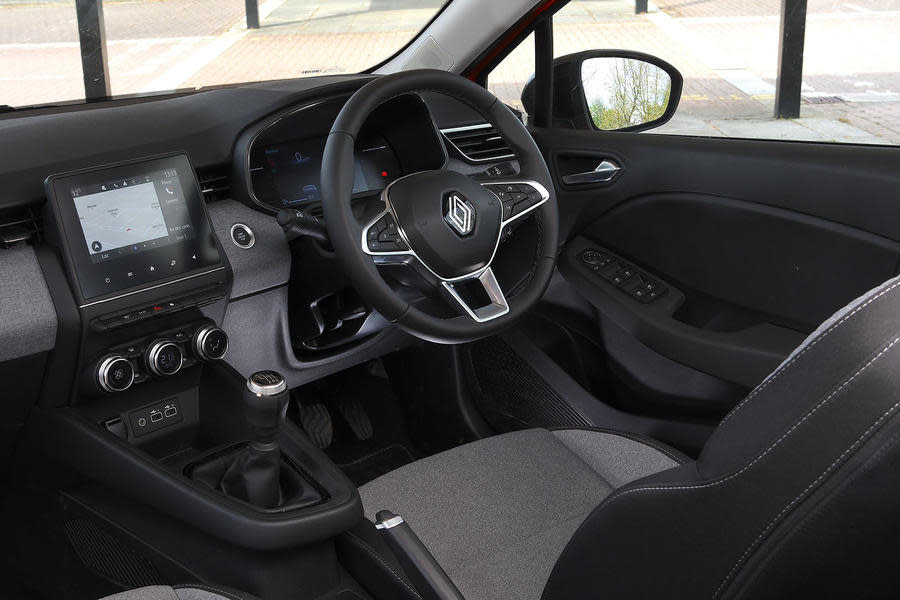
By contrast, the Renault exudes an almost premium vibe, thanks to its seemingly higher-grade materials and a smart wraparound dash that’s finished with a natty full-width fabric strip. And although its infotainment touchscreen is a little smaller than the Suzuki’s, it’s less fiddly to navigate. Still, both feature Apple and Android connectivity for enhanced ease of use.
The Clio also gives you more cubbies for the numerous odds and ends that families tend to accrue. Yet given its more generous exterior dimensions, the Renault offers no real advantage for boot space or rear-seat occupants. Both contenders here offer around 250 litres of luggage-carrying capacity (although the Renault’s load area is hampered by a high lip) and they are able to house three adults in the rear at a pinch. The Clio’s larger windows mean passengers won’t feel as hemmed in as they will in the Swift, though.
Either way, all those on board will appreciate the Suzuki’s new-found refinement. The use of extra soundproofing, thicker carpets and hydraulic engine mounts allows it to rival the grown-up Clio for hushed progress.
Each car suffers from some wind noise on the motorway, but both are surprisingly relaxed long-distance cruisers, featuring a long-striding top gear (fifth in the Suzuki, sixth in the Renault) and just about enough torque to avoid the need for frequent downshifts when hauling up hills. So neither of our dinky duo feels out of its depth away from the urban jungle.
The Renault scores extra points here for its typically French ride, its softer and longer-travel suspension dealing more adeptly with long-wave undulations and sharp ridges and potholes. It’s more comfortable at low speeds too. If anything, the Swift’s enhanced refinement makes it quieter over the bumps but it follows more of the road’s topography and becomes fidgety around town.
Suzuki Swift vs Renault Clio: Driving dynamics
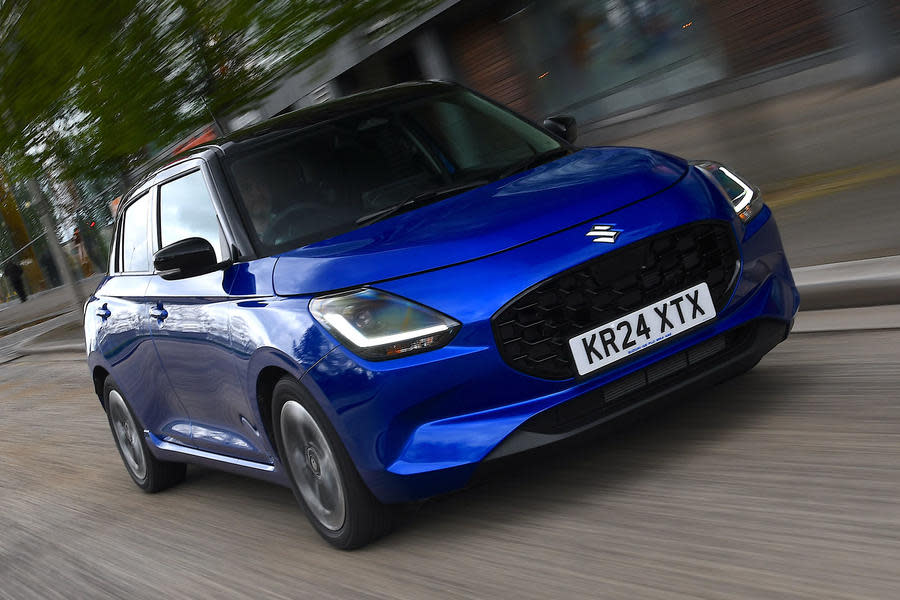
The upshot of the Suzuki’s stiffer set-up is greater small car handiness when slicing through suburbia or out on the open road, threading a few corners together.
Its steering offers superior weighting and accuracy, while the wheel-at-each-corner stance and gratifyingly low kerb weight (at 949kg, it’s over 150kg lighter than the Renault) gives the Suzuki a twinkle-toed agility that the Clio can’t quite match.
Point it at a corner and the Swift’s front end bites with impressive tenacity, while you can feel the car pivot around your hips as the rear axle takes up its share of the lateral load, its line subtly tightening if you back off mid-bend.
There’s genuine fun to be had here – almost enough to offset the rage induced by the maddeningly complicated process of disabling some of the more irritating driver aids every time you restart the car. (You can blame the latest Vehicle General Safety Regulations for this, rather than Suzuki, which is toeing the line in order to earn a full complement of Euro NCAP gold stars.)
Make no mistake: the Renault is composed and capable, but a more mature approach means it lacks some of the Suzuki’s sparkle, giving a more even balance of ride and handling. It still feels confidence-inspiringly compact when slipping through traffic but it doesn’t have the Swift’s poise and precision when pushing on.

The Renault’s steering is lighter and feeds you fewer messages, while the more compliant suspension results in more roll and a fraction less control over more ragged stretches of road. And with more mass to contain, the Clio’s tyres give up a little earlier, and the resulting understeer induces the odd nip on the brakes from the electronic safety net.
Suzuki Swift vs Renault Clio: Powertrains
Mind you, you’ll be approaching corners slightly more quickly in the Clio, because the extra welt of mid-range turbocharged muscle makes it fractionally the faster car once you’re rolling.
What it lacks is the Swift’s crisp low-speed response and careful throttle use is needed to avoid lurching progress as the turbo suddenly comes on strong. While its manual gearbox’s six speeds are more closely stacked, the shift itself feels flakier too. Ultimately, the sweeter and smaller Swift is better suited for urban driving.

But the Swift’s real dynamic highlight is its gem of a powertrain. Despite its double-digit power figure, the three-cylinder unit feels keen off the line thanks to the seamless low-rev torque fill from the starter-generator.
It’s also eager to rev, backed by a happily thrummy soundtrack and smooth when extended. Then there’s the slick and positive five-speed manual that goads you into extracting every last ounce of the Swift’s modest performance potential.
Suzuki Swift vs Renault Clio: Verdict
Does that make the Suzuki our winner? That depends on your priorities. If you usually travel one-up and are looking for a commuter car that injects a sense of fun into the daily grind, the Swift is hard to resist. Better still, its blend of low weight and abstemious new engine helps to offset its higher asking price, with an easy 60mpg possible in everyday use, and CO2 emissions of 99g/km save you a few quid on the annual tax bill.
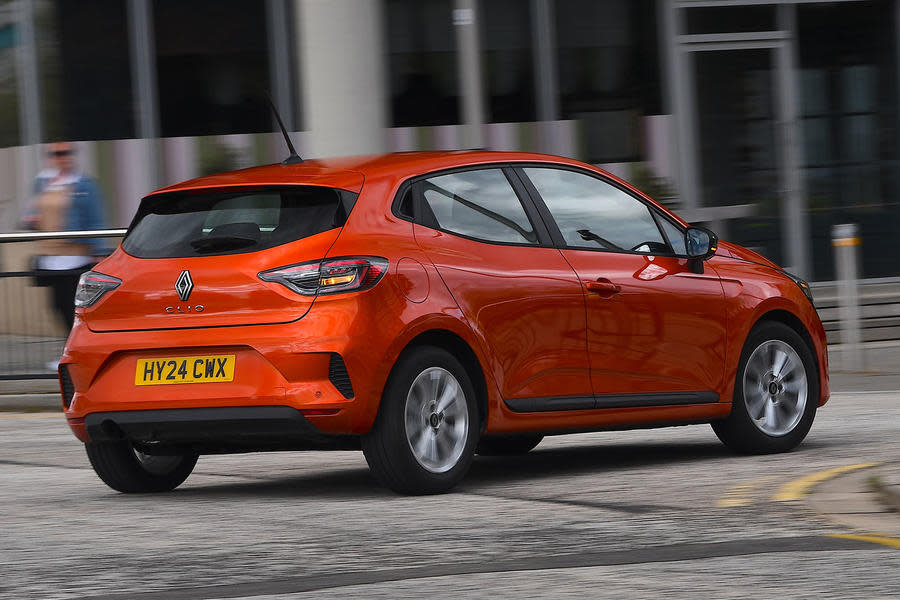
However, the Clio is hardly a conspicuous consumer, even if it can’t quite match the penny-pinching parsimony of its rival. It also fills the supermini brief more effectively than the Swift, its greater comfort and a cabin that’s fractionally roomier and more versatile allowing it to play the role of stand-in family car more effectively.
Ultimately, the Renault is a more rounded performer, the sort of small car that could be your only form of transport. However, the margins here are fine, and if driving pleasure tops your wish list, we would understand if you were swayed by the cheeky charms of the Swift.
More importantly, the very existence of each of these contenders suggests that news of the small car’s death might have been somewhat exaggerated.
In fact, their ability to deliver such a broad range of abilities using fewer resources (both in construction and use) than almost any other car arguably makes vehicles like this more relevant than ever. Let’s hope we can enjoy their kind for quite a few years yet.
Winner
1st. Renault Clio
Mature driving dynamics, a classier and more usable interior and a lower price keep the Renault ahead by a nose.
2nd. Suzuki Swift
Few small, affordable cars are as much fun to drive, but it’s let down by a cheaper cabin, flawed driving position and intrusive driver aids.
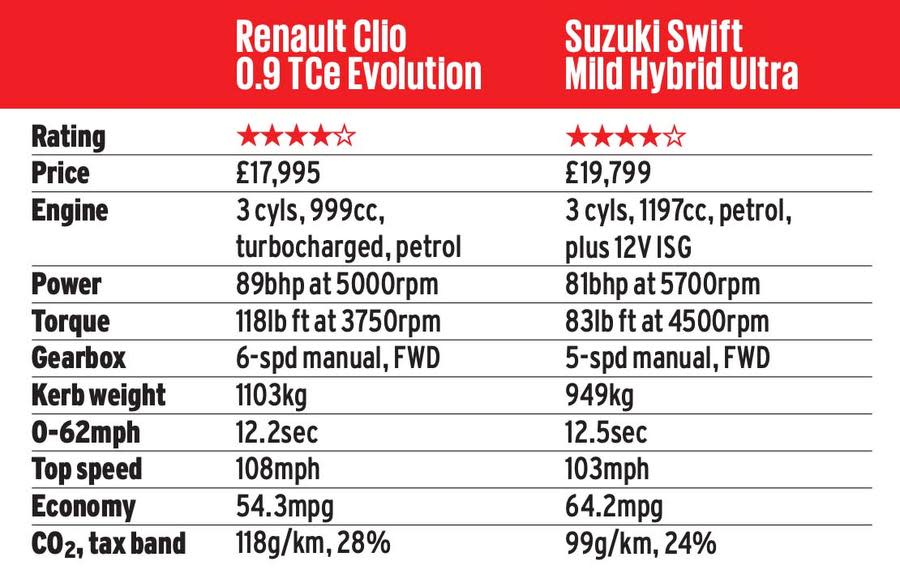
]]>

 Yahoo Autos
Yahoo Autos 